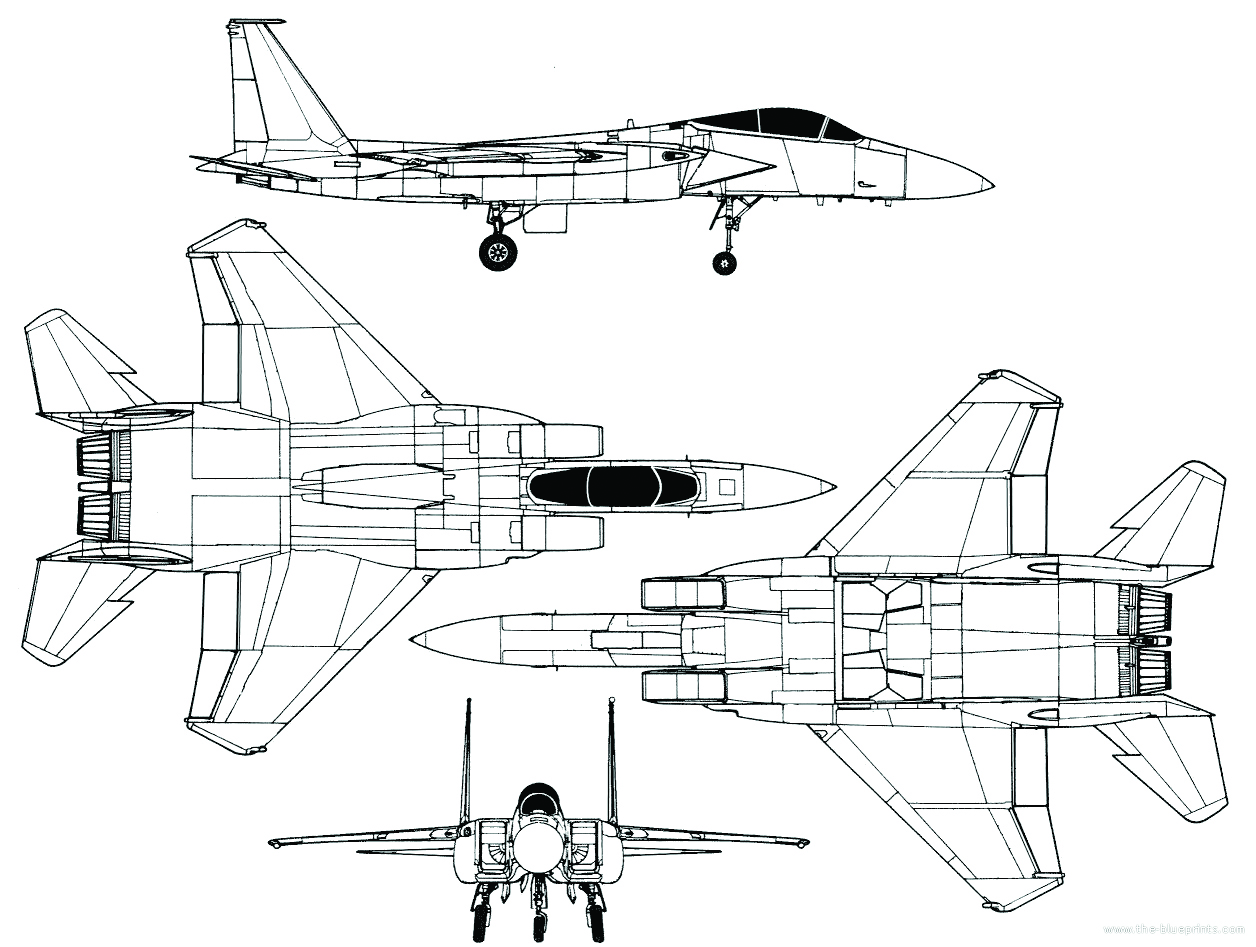Widely considered to be one of the most successful, modern airframes of all time, the F-15 Eagle is the standard by which many air superiority fighters measure up.
The F-15A single-seat, all-weather, air-superiority fighter first took flight in 1972 and was designed as an all-weather, highly maneuverable, tactical fighter designed to permit the United States Air Force (USAF) to gain and maintain air supremacy over the battlefield. These aircraft were the first US fighters to have an engine thrust greater than the normal weight of the aircraft. This engine thrust allowed the aircraft to accelerate while in a vertical climb. F-15C, D and E models were deployed to the Persian Gulf in 1991 in support of Operation Desert Storm, where they proved their superior combat capability. In fact, F-15C fighters accounted for 34 of the 37 USAF air-to-air victories. The F-15E Strike Eagles operated mainly at night, hunting SCUD missile launchers and artillery sites using the LANTIRN system. They have since been deployed for air expeditionary force deployments and operations Southern Watch (no-fly zone in Southern Iraq), Provide Comfort in Turkey, Allied Force in Bosnia, Enduring Freedom in Afghanistan and Iraqi Freedom in Iraq.

Serial Number: 77-0090
Manufacturer: McDonnell Douglas
Crew: One
Engines: Two Pratt & Whitney F100-PW-100 turbofans; 23,950 pounds afterburner thrust each
Wingspan: 42 feet 9 3/4 inches
Length: 63 feet 9 inches
Height: 18 feet 5 1/2 inches
Weight: 27,000 pounds (empty); 56,000 pounds (maximum)
Speed: 570 mph (cruising); 1,650 mph, Mach 2.5 (maximum)
Range: 3,450 miles with external fuel tanks
Service Ceiling: 65,000 feet
Armament: One 20mm rotary cannon; 4 AIM-7 Sparrow air-to-air missiles; 4 AIM-9 Sidewinder air-to-air missiles; up to 15,000 pounds external ordnance
Cost: $10,890,000
In 1970, Hill Air Force Base received Specialized Repair Activity assignments, including repair on the F-15’s skid control. Three years later, the Ogden Air Materiel Area also received the Specialized Repair Activity assignment for repair on the F-15’s landing gear.
The F-15A was manufactured by McDonnell Douglas and accepted by the USAF in October 1978. The aircraft was then assigned in November 1978 to the 32nd Tactical Fighter Squadron of the USAF Europe at Soesterberg Air Base in The Netherlands.
In July 1980, the aircraft was transferred to the 33rd Tactical Fighter Wing of the Tactical Air Command at Eglin Air Force Base. The 57th Fighter Weapons Wing at Nellis Air Force Base took possession of the aircraft in November 1982. In February 1984, the 405th Tactical Fighter Wing at Luke Air Force Base got the aircraft.
The aircraft was assigned to the 325th Fighter Wing at Tyndall Air Force Base in February 1992. It was first assigned to the 95th Tactical Fighter Training Squadron but was later moved to the 1st Fighter Squadron. In early 1994, the F-15 was retired, logging 3,500 flight hours. It was refurbished for static display by personnel of the 653rd Combat Logistics Squadron Support at Warner Robins Air Logistics Center at Robins Air Force Base. The aircraft arrived at Hill Aerospace Museum in late March 1994.
Widely considered to be one of the most successful, modern airframes of all time, the F-15 Eagle is the standard by which many air superiority fighters measure up.
In a head-to-head battle, the F-16’s higher maneuverability proves its advantage, but each aircraft has its own advantages and disadvantages, making comparison difficult, but not impossible.
While the F-15 is a faster aircraft, able to move at Mach 2.4 utilizing full afterburner, the F-22 can maintain a cruising speed of Mach 1.6 giving it a significant advantage.